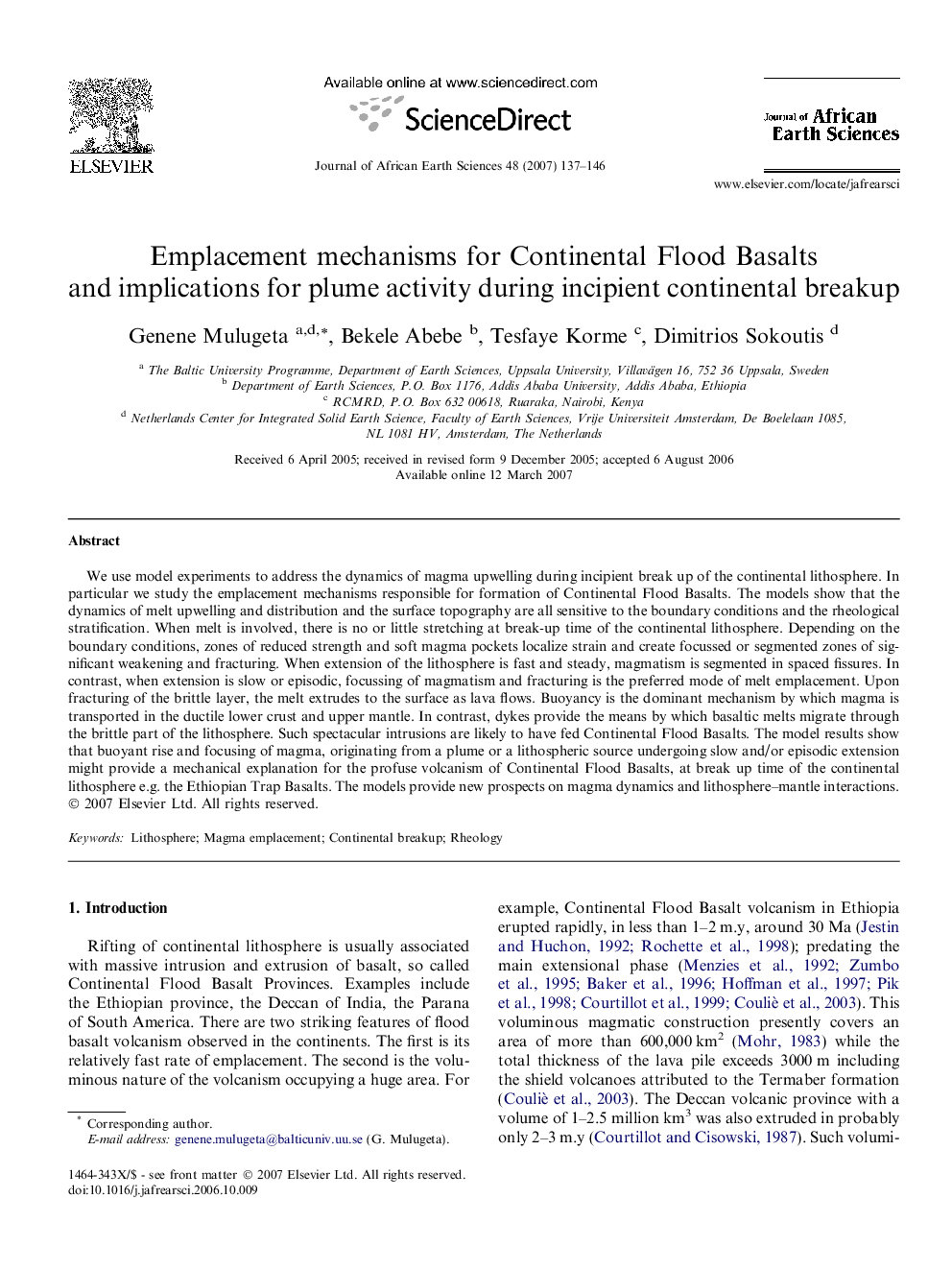| Article ID | Journal | Published Year | Pages | File Type |
|---|---|---|---|---|
| 4729764 | Journal of African Earth Sciences | 2007 | 10 Pages |
We use model experiments to address the dynamics of magma upwelling during incipient break up of the continental lithosphere. In particular we study the emplacement mechanisms responsible for formation of Continental Flood Basalts. The models show that the dynamics of melt upwelling and distribution and the surface topography are all sensitive to the boundary conditions and the rheological stratification. When melt is involved, there is no or little stretching at break-up time of the continental lithosphere. Depending on the boundary conditions, zones of reduced strength and soft magma pockets localize strain and create focussed or segmented zones of significant weakening and fracturing. When extension of the lithosphere is fast and steady, magmatism is segmented in spaced fissures. In contrast, when extension is slow or episodic, focussing of magmatism and fracturing is the preferred mode of melt emplacement. Upon fracturing of the brittle layer, the melt extrudes to the surface as lava flows. Buoyancy is the dominant mechanism by which magma is transported in the ductile lower crust and upper mantle. In contrast, dykes provide the means by which basaltic melts migrate through the brittle part of the lithosphere. Such spectacular intrusions are likely to have fed Continental Flood Basalts. The model results show that buoyant rise and focusing of magma, originating from a plume or a lithospheric source undergoing slow and/or episodic extension might provide a mechanical explanation for the profuse volcanism of Continental Flood Basalts, at break up time of the continental lithosphere e.g. the Ethiopian Trap Basalts. The models provide new prospects on magma dynamics and lithosphere–mantle interactions.
